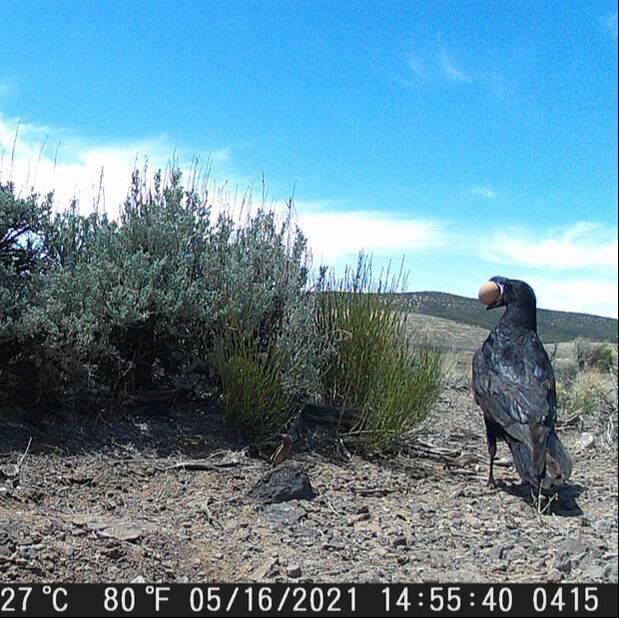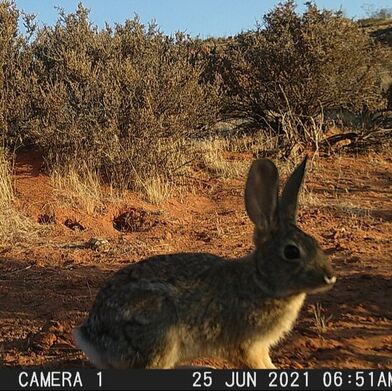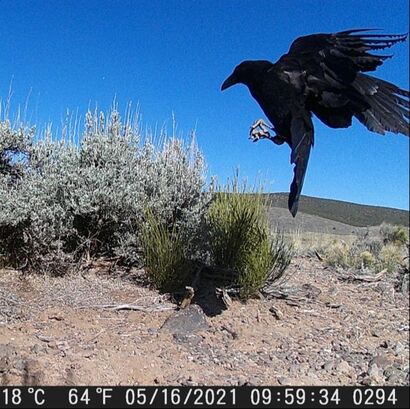|
Common Raven
By Mallory Ortego and Dr. Nicki Frey Identification and Biology The common raven (Corvus corax) can be found all throughout the Northern Hemisphere from the icy Artic to the Mediterranean. Ravens are all black, approximately 24-25 inches long. Ravens can be found in rural settings such as forests and open spaces to small towns and even cities. The Raven will eat almost whatever it can get a hold of, which is why they are seen in such different environments. They eat carrion, which is the decaying flesh of dead animals and will consume different types of bugs, fish, berries and any type of human food. Do you see a raven or a crow? Ravens and crows belong to the same Genus - Corvus, but American crows are a different Species - brachyrynchos. While both species are omnivorous - eating both plants and animals, we associate crows with eating grains and ravens with eating carrion and eggs. Sometimes, it is difficult to tell these species apart. But here are a few tips. Ravens are much bigger than crows; 24-25 inches long compared to 15-18 inches long. The raven's beak is thicker and longer, and it often can have shaggy looking neck feathers. In the air, ravens have a diamond shaped tail, rather than a fan-shaped tail. Ravens are known for their aerial acrobatics and can soar, whereas crows have consistent flapping beats when flying. his genus is known for its intelligence and adaptability. Ravens and crows are known to recognize different people and can also determine the intentions of humans. Ravens have also been seen using tools (sticks, rocks, etc.) to help get food or solve a problem. They can also use these tools to create mischief - in the U.K. there are several reports of Corvids (members of the Corvus family) purposefully dropping rocks and stones onto cars. They can also be seen gathering stones and pebbles, perhaps to line their nest? |
|
In the Western United States, raven numbers have been increasing steadily for the last 50 years, in association with human activities such as cattle grazing, energy extraction, powerlines, and towns and cities. While most of the time, this is not a problem, some Western wildlife species can be negatively impacted by increased raven populations. For example, ravens are a major threat to the Mojave desert tortoise, an endangered species of the desert southwest. Ravens depredate hatchling tortoises, devastating the tortoise's ability to successfully reproduce. The US Department of Agriculture is currently studying raven depredation of desert tortoises to determine the best method of controlling them. One method they have of studying the depredation is by creating tortoise hatchling replicas and putting them into the desert in tortoise habitat. By placing a motion-sensored camera nearby, they can determine if ravens in the area are attracted to the tortoises, and details such as the habitat type, what time of day, and the general age of the ravens.
|
|
Another species potentially impacted by the increased raven populations in the western United States is the Greater sage-grouse, a species of concern in Utah and many western states. Ravens can target nesting Greater sage-grouse and depredate the eggs of the birds, decreasing the species ability to reproduce young. Many researchers across the west are studying ways to monitor and deter ravens from depredating sage-grouse nests. The best way that we know of so far is to restrict where ravens can nest. It seems that a pair of ravens trying to raise their chicks are more likely to depredate sage-grouse nests than unmated ravens or young ravens that aren't reproducing.
Both ravens and crows are protected by the International Migratory Bird Treaty Act, which regulates lethal control of birds that migrate among countries in North America. To date, crows can be hunted in several states and Utah is considering this option. Ravens are protected from hunting; however, their populations can be regulated by USDA Wildlife Services, which has a permit to manage populations of ravens in areas where they are causing conflicts with sheep and cattle operations, and more recently in areas where ravens are threatening endangered or sensitive species. |



